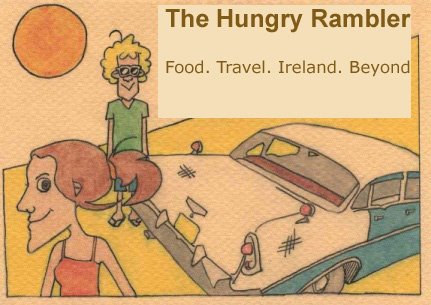Since Paddy's Day is just around the corner, what better time than now to reflect on those little food habits, small nuggets of infectious Irishness that make us, foreigners, become a little bit more Irish as time goes by.
12 years since I first landed in Dublin, straight out of college, many things have changed in the country. Looking at the following list, I realise I have also done a fair bit of changing myself!...
-Lasagne and chips
Coming from 'The Continent', the first impression when encountering lasagne with chips on a menu is of horror. Surely pasta doesn't need any additional carbs...or does it? 12 years on, I wouldn't have it any other way...
-Cheese and onion crisps
Cheese and onion Taytos are probably the biggest export from Irish mammies to their offsprings in
Australia but to the non-Irish crisp lover the first impression when coming across cheese and onion
crisps can be condensed in one word: gross! Where are the plain old-fashion ready salted crisps? With time and practice, we’ve learnt to love them too, of course. Salt and vinegar are still far
superior though… which takes me to the next thing…
-Vinegar on chips
To a foreigner, it is weird enough this obsession of eating chips on their own, but surely, we've all been quickly converted to the humble bag of chips too, but with salt and vinegar? That might have disgusted you 10 years ago. Not anymore.
-A good cuppan tae agus baine
As a rule of thumb, Galicians don’t put milk in their tea. Not that they drink much tea to start with.
But if tea must be drunk, it will be a light watery concoction with lemon and sugar in it. Outrageous,
isn’t it? I agree… nothing beats a good cuppa agus baine. And there is nothing that couldn't be solved (or nearly) with a cup of tea. A few years back I would have added 5 teaspoons of sugar to it though.
-Dinner for breakfast or breakfast for dinner?
To be honest, breakfast is one thorny issue the Irish and southern continentals are never going to
agree on. Some rather have a rashers sambo at 7 in the morning, the others would prefer to stick to
a coffee or Cola Cao and a piece of lemon drizzle cake. Two different philosophies. Both acceptable.
Likely to cause trouble? Yes. If you are coming to Ireland just stick a few Cola Cao sachets in your
case. If you are heading to Galicia, you might need to bring a few sausages on the sly.
The one thing I still haven't manage to embrace? the yuk crème eggs... some things are just a step too far.
And to finish off, since it is virtually impossible to end a phone conversation in Ireland with just one single 'goodbye'... It is a 'Bye, bye, bye, bye, bye...' for now...
Happy St Patrick's Day! wherever you are, and whatever you are munching!
Top 25 UK Cosmetic Dentists with Prices, Treatments & Reviews Kings of War
presents a...
The post Top 25 UK Cosmetic Dentists with Prices, Treatments& Re...



